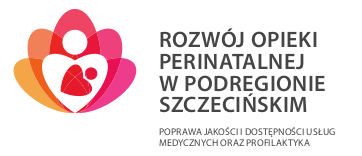Feeding a sick child may cause various difficulties related to natural breastfeeding.
However, it must be remembered that the priority issue is providing a sick child with the mother’s milk or a donor’s milk, and enabling (returning to) fully natural breastfeeding.
What can a mother do?
- Stimulate and/or maintain lactation in a situation when she is separated from her baby or when exclusive breastfeeding is ineffective
- Feed the child exclusively with her own milk (if possible)
- Use alternative methods of supplementary feeding, in order to facilitate and enable future breastfeeding
- If breastfeeding is not possible, offer kangaroo care to the child as often as possible
Children born preterm are patients requiring special care. Their organisms are not adapted to life outside of their mother’s body. To a large extent, modern technology and equipment ensure their survival. However, nutrition plays a paramount role in the development of a preterm baby. It is recommended that every preterm infant receives its own mother’s milk. The official WHO recommendation is as follows:
“Hospitals and medical practitioners should recommend human milk for feeding of preterm infants and other children at risk in the form of breastfeeding and/or the baby’s own mother’s expressed milk. Support and education on breastfeeding and milk expression should be provided to mothers as early as possible. Mothers ought to be encouraged to provide “skin-to-skin” contact as soon as possible and to engage in direct breastfeeding.”
Benefits associated with feeding a preterm baby with its mother’s milk include:
- Accelerated development of intestines thanks to the enzymes and growth factors contained in human milk (none of which are present in modified milk),
- Decreased risks of necrotic enteritis, septicaemia and hospital-acquired infections,
- Decreased risks of allergic diseases (modified milk contains bovine protein of foreign species origin – a common allergen),
- Optimal development and maturity of the retina,
- Increased cognitive skills,
- Protection of the baby from microorganism present in the hospital environment,
- Stable water and electrolyte balance,
- Quicker emptying of the stomach (artificial milk is retained in the stomach twice as long – approx. 51 minutes).
The course of action aimed at commencing, stabilizing and maintaining lactation after a preterm delivery includes:
- Early stimulation of lactation – 12 – 24 h after delivery,
- Skin-to-skin contact
- Proper breast pump – good-quality, electrical one,
- Adequately frequent milk expression – every 3 h,
- Proper procedure of milk expression – 7, 5 ,3 minutes,
- Proper course of action during a spell of breast fullness,
- Alternative supplementary feeding,
- Lactation support,
- Psychological support.
To ensure the most effective feeding of a preterm infant, a 6-step strategy of feeding preterm children has been devised:
- Feeding the child with expressed milk starts from 10-20 cm3/kg/day; milk amount can be doubled every day, until the amount of 150 cm3/kg/day is reached and at that point parenteral nutrition is gradually being withdrawn;
- If a baby receives 150 cm3/kg/day of milk, 2 sachets of BMF per 100 cm3 of mother’s milk can be added, successful tolerance allows an increase of BMF addition to 4 sachets per 100 cm3;
- If body mass growth is less than 15g/day, the amount of milk with BMF must be increased to 160-180 cm3/kg/day;
- If body mass growth is still lower than 15g/day, hind milk should be used in the amount of 180 cm3/kg/day fortified with BMF;
- If growth remains unsatisfactory, corn oil should be given in the amount 0.5 cm3 every 3h (preferred form of delivery is in bolus rather than mixed with milk)
- If we fail to achieve an improvement, we introduce mixed feeding: 4 feedings with baby formula for premature infants, 4 feedings with mother’s milk mixed with BMF.



